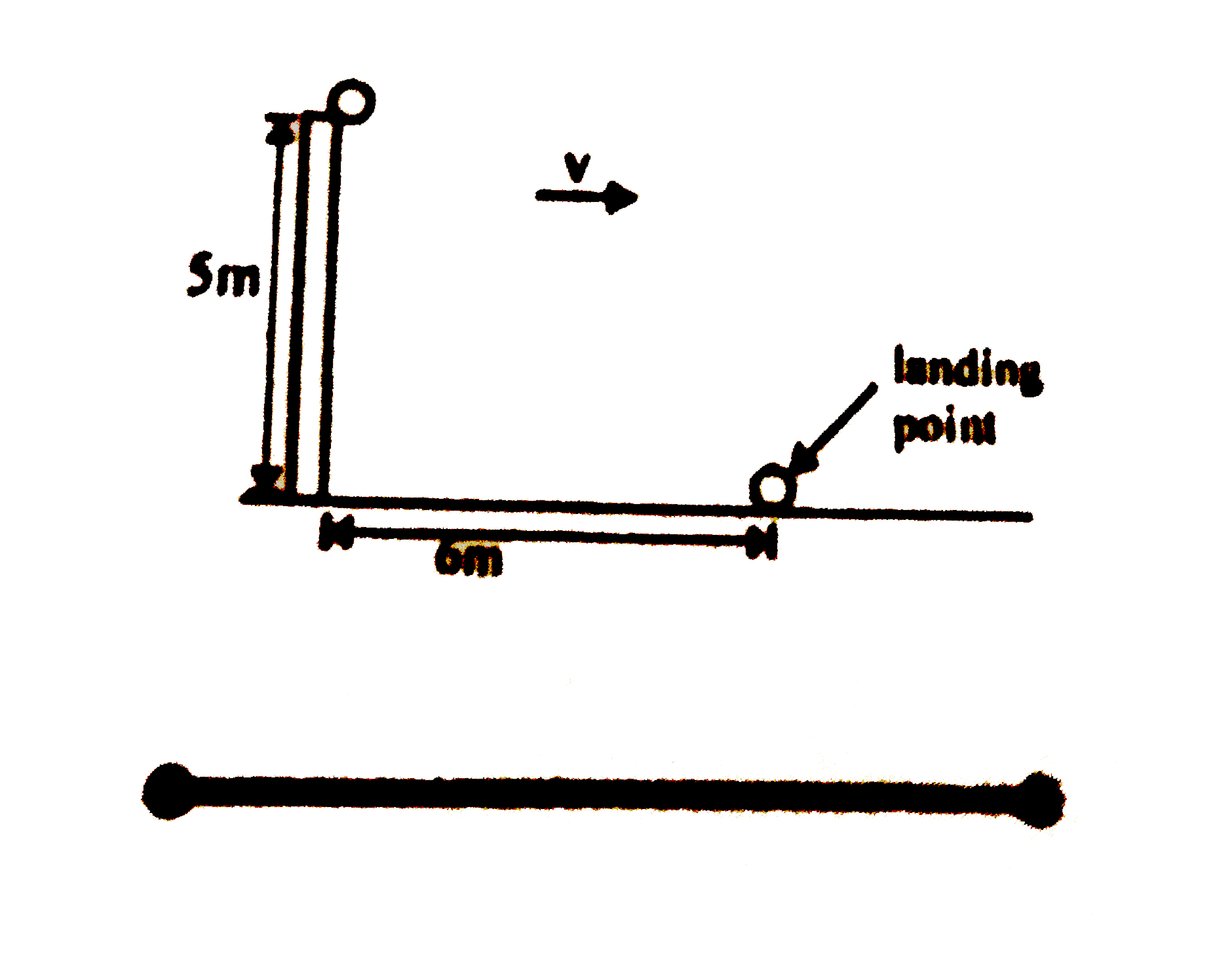An object falling from rest in air is subject not only to the gravitational force but also to air resistance. Assume that the air resistance is proportional to the velocity with constant of proportionality as k>0 , and acts in a direction opposite to motion (g=9.8ms2). Then velocity cannot exceed. (a)9.8m/k m/s (b) 98/km m/s (c) k/g m/s (d) None of these
9.8/km/s
98/k m/s
k9.8m/x
None of these
The correct Answer is:A
Let V(t) be the velocity of the object at time t.
Given dVdt=9.8−kV or dvV9.8−kV=dt
Integrating, we get log(9.8−kV)=−kt+logC
or 9.8−kV=Ce−kt
But V(0)=0 or C=9.8
Thus, 9.8−kV=9.8e−kt
or V(t)=9.8k(1−e−kt)<9.8k for all t
Hence, V(t) cannot exceed 9.8k m/s.
Topper's Solved these Questions
- BOOK - CENGAGE ENGLISHCHAPTER - DIFFERENTIAL EQUATIONSEXERCISE - MULTIPLE CORRECT ANSWERS TYPE17videos
DIFFERENTIAL EQUATIONS
- BOOK - CENGAGE ENGLISHCHAPTER - DIFFERENTIAL EQUATIONSEXERCISE - Linked Comprehension types21videos
DIFFERENTIAL EQUATIONS
- BOOK - CENGAGE ENGLISHCHAPTER - DIFFERENTIAL EQUATIONSEXERCISE - CONCEPT APPLICATION EXERCISES 10.95videos
DIFFERENTIAL EQUATIONS
- BOOK - CENGAGE ENGLISHCHAPTER - DIFFERENT PRODUCTS OF VECTORS AND THEIR GEOMETRICAL APPLICATIONS EXERCISE - Multiple correct answers type11videos
DIFFERENT PRODUCTS OF VECTORS AND THEIR GEOMETRICAL APPLICATIONS
- BOOK - CENGAGE ENGLISHCHAPTER - DIFFERENTIATIONEXERCISE - Archives14videos
DIFFERENTIATION
Similar Questions
Knowledge Check
- Question 1 - Select One
A raindrop of mass 1 g falling from a height of 1 km hits the ground with a speed of 50ms−1. If the resistive force is proportional to the speed of the drop, then the work done by the resistive force is (Take g=10ms−2)
A10 JB-10 JC8.75JD−8.75J
A stone is projected with speed 20m/s at angle 37∘ with the horizontal and it hits the ground with speed 12m/s due to air resistance. Assume the effect of air resistance to reduce only horizontal component of velocity. Then the time of flight will be-
View SolutionA ball is dropped from rest from a tower of height 5m. As a result of the wind it lands at a distance 6m from the bottom of the tower as shown. Assuming no air resistance but that the wind gives the ball a constant horizonta velocity v. Find value of v in m/s.
 View Solution
View SolutionA body is projected horizontally from the top of a hill with a velocity of 9.8 m/s. What time elapses before the vertical velocity is twice the horizontal velocity?
View SolutionAn object of mass 5 kg falls from rest through a vertical distance of 20m and attains a velocity of 10 m/s. How much work is done by the resistance of the air on the object?
(g=10m/s2).View SolutionAn object of mass 5 kg falls from rest through a vertical distance of 20m and attains a velocity of 10 m/s. How much work is done by the resistance of the air on the object?
(g=10m/s2).View SolutionThe relative velocity of two objects A and B is 10 m/s. If the velocity of object A is 40 m/s then the velocity with which B is moving is (assume both objects are moving in same direction)
View SolutionThe velocity of sound in air is 340ms. If the density of air is increased to 4 times, the new velocity of sound will be
View Solution

